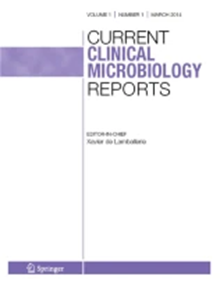古生菌在动物和人类微生物群中的共生相互作用
IF 2.7
Q2 MICROBIOLOGY
引用次数: 0
摘要
自古生菌作为一种新的生命领域被引入以来,随着其系统发育分类和对其特有生物学特性的了解的进展,古生菌作为一种独特的微生物广泛存在于极端生态系统中,但也存在于包括真核宿主在内的各种中等生态系统中。然而,古生菌仍然是微生物组中被忽视的参与者,由于方法上的挑战,古生菌与细菌相互作用的研究仍处于起步阶段。本文综述了古细菌作为微生物组的组成部分的现有知识,重点介绍了它们与邻近细菌的相互作用以及古细菌相互作用的原理。古生菌是动物和人类微生物群的共同组成部分,以Euryarchaeota为主。胃肠道是研究最多的身体部位,其中古生菌占所有微生物的4%,主要以产甲烷菌为代表。虽然假设产甲烷菌间接参与致病性,但尚未发现古细菌病原体。古菌相互作用包括共生关系,细胞膜和细胞壁可能对这些相互作用至关重要,就像群体感应/淬灭一样。特别是,能量缺乏胁迫下的共生相互作用似乎是古菌的基本策略。然而,迫切需要更多的研究来发现古细菌如何感知环境,与细菌竞争,以及在与多细胞生物相关的复杂微生物群中相互作用。本文章由计算机程序翻译,如有差异,请以英文原文为准。
Symbiotic Interactions of Archaea in Animal and Human Microbiomes
Abstract Purpose of Review Since the introduction of Archaea as a new domain of life more than 45 years ago, progress in their phylogenetic classification and knowledge of their exclusive biological characteristics has identified archaea as unique microorganisms which are widespread in extreme but also in various moderate ecosystems, including eukaryotic hosts. However, archaea are still neglected players within microbiomes, and research on archaea-bacteria interactions is still in its infancy due to methodological challenges. Recent Findings This review summarizes the current knowledge of archaea as components within microbiomes and focuses on their interactions with their bacterial neighbors and the principles of archaeal interactions. Summary Archaea are common constituents of animal and human microbiomes, which are dominated by Euryarchaeota. The gastrointestinal tract is the most studied body site, where archaea account for up to 4% of all microorganisms, primarily represented by methanogens. No archaeal pathogen has yet been identified, although methanogens are hypothesized to be indirectly involved in pathogenicity. Archaeal interactions comprise symbiotic relationships, and the cell membrane and wall might be as crucial as quorum sensing/quenching for these interactions. Particularly, syntrophic interactions under energy-deficiency stress seem to be an essential strategy for archaea. However, more research is urgently needed to discover how archaea sense their environment, compete with bacteria, and interact within complex microbiomes associated with multicellular organisms.
求助全文
通过发布文献求助,成功后即可免费获取论文全文。
去求助
来源期刊

Current Clinical Microbiology Reports
MICROBIOLOGY-
CiteScore
7.50
自引率
1.90%
发文量
9
期刊介绍:
Current Clinical Microbiology Reports commissions expert reviews from leading scientists at the forefront of research in microbiology. The journal covers this broad field by dividing it into four key main areas of study: virology, bacteriology, parasitology, and mycology. Within each of the four sections, experts from around the world address important aspects of clinical microbiology such as immunology, diagnostics, therapeutics, antibiotics and antibiotic resistance, and vaccines. Some of the world’s foremost authorities in the field of microbiology serve as section editors and editorial board members. Section editors select topics for which leading researchers are invited to contribute comprehensive review articles that emphasize new developments and recently published papers of major importance, which are highlighted in annotated reference lists. These timely reviews of the literature examine the latest scientific discoveries and controversies as they emerge and are indispensable to both researchers and clinicians. The editorial board, composed of more than 20 internationally diverse members, reviews the annual table of contents, ensures that topics address all aspects of emerging research, and where applicable suggests topics of critical importance to various countries/regions.
 求助内容:
求助内容: 应助结果提醒方式:
应助结果提醒方式:


